七年级英语下册第二单元公开课人教版
- 格式:pdf
- 大小:3.46 MB
- 文档页数:15



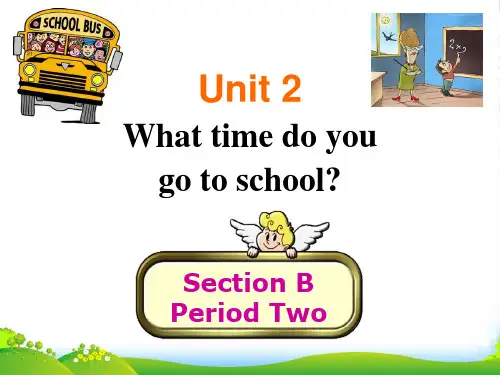
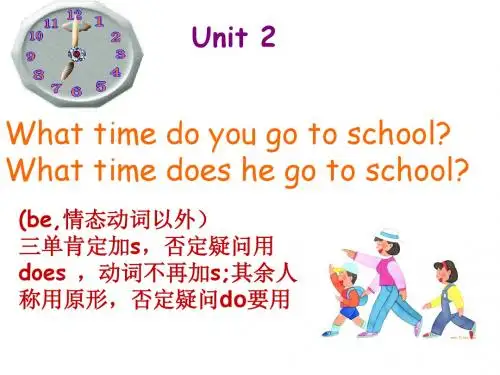
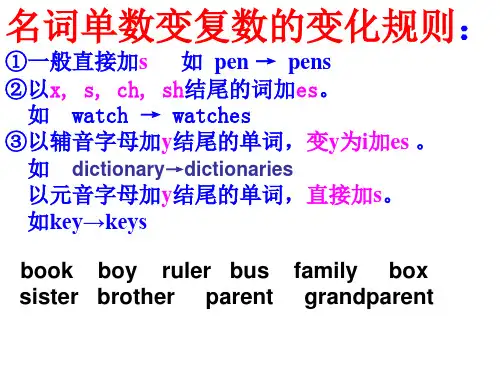


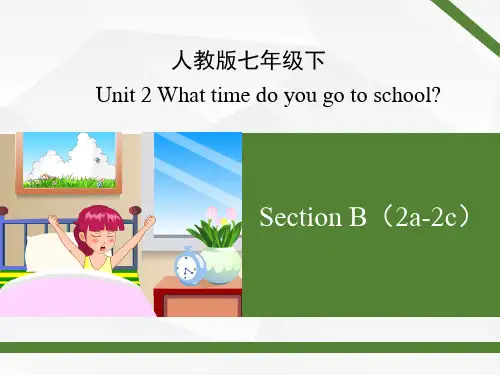
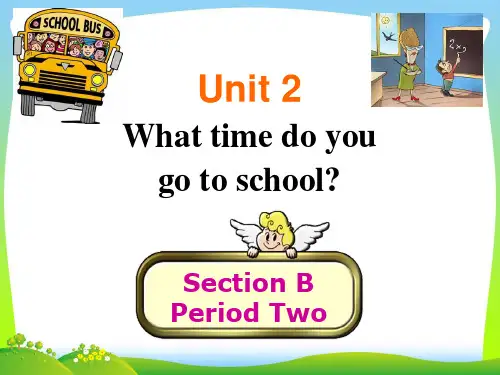

Unit 2 What time do you go to school?Section A (2d—3c)教学设计一、教学目标1. 能够熟练掌握本课重点词汇:job, work, station, o’clock, night, funny, exercise, best, group2. 能够熟练掌握本课重点句型:(1) — What time do you usually get up?— I usually get up at six thirty.(2) — When does Scott go to work?—He always goes to work at 11:00.3. 能够正确使用what time和when引导的特殊疑问句询问日常活动的时间。
4. 能够掌握频度副词在句中的位置的基本用法。
5. 能够进一步掌握一般现在时中单数第三人称的动词描述他人日常活动的用法。
6. 能够运用所学准确描述特殊职业人员的日常作息习惯。
二、教学重点及难点重点:1. 能够正确使用what time和when引导的特殊疑问句询问日常活动的时间。
2. 能够掌握频度副词在句中的位置的基本用法。
难点:1. 能够进一步掌握一般现在时中单数第三人称的动词描述他人日常活动的用法。
2. 能够运用所学准确描述特殊职业人员的日常作息习惯。
三、教学过程四、板书设计Unit 2 What time do you go to school?第2课时Section A (2d—3c)1. Key words: job, work, station, o’clock, night, funny, exercise, best, group2. Key sentences:(1) — What time do you usually get up?— I usually get up at six thirty.(2) — When does Scott go to work?—He always goes to work at 11:00.。
Unit 2 What time do you go to school?Section B (2a—2c)教学设计一、教学目标1. 熟练掌握本课重点词汇:quickly, either, lot, sometimes, taste2. 熟练掌握以下句型:When I get home, I always do my homework first.I either watch TV or play computer games.At twelve, she eats lots of fruit and vegetables for lunch.She knows it’s not good for her, but it tastes good!3.能够读懂有关日常生活习惯的短文,了解健康的生活方式与不健康的生活方式,并且根据不同的阅读任务,提取关键信息。
4.能够设计“健康生活时间表”,并提出合理的健康生活作息的建议。
5. 关注健康生活,培养良好的生活习惯。
二、教学重点及难点重点:1. 能够读懂有关日常生活习惯的短文,了解健康的生活方式与不健康的生活方式,并且根据不同的阅读任务,提取关键信息。
2. 能够设计“健康生活时间表”,并提出合理的健康生活作息的建议。
难点:能够设计“健康生活时间表”,并提出合理的健康生活作息的建议。
三、教学过程四、板书设计Unit 2 What time do you go to school?第2课时Section B (2a—2c) Key words: quickly, either, lot, sometimes, tasteKey sentences:When I get home, I always do my homework first.I either watch TV or play computer games.At twelve, she eats lots of fruit and vegetables for lunch.She knows it’s not good for her, but it tastes good!。